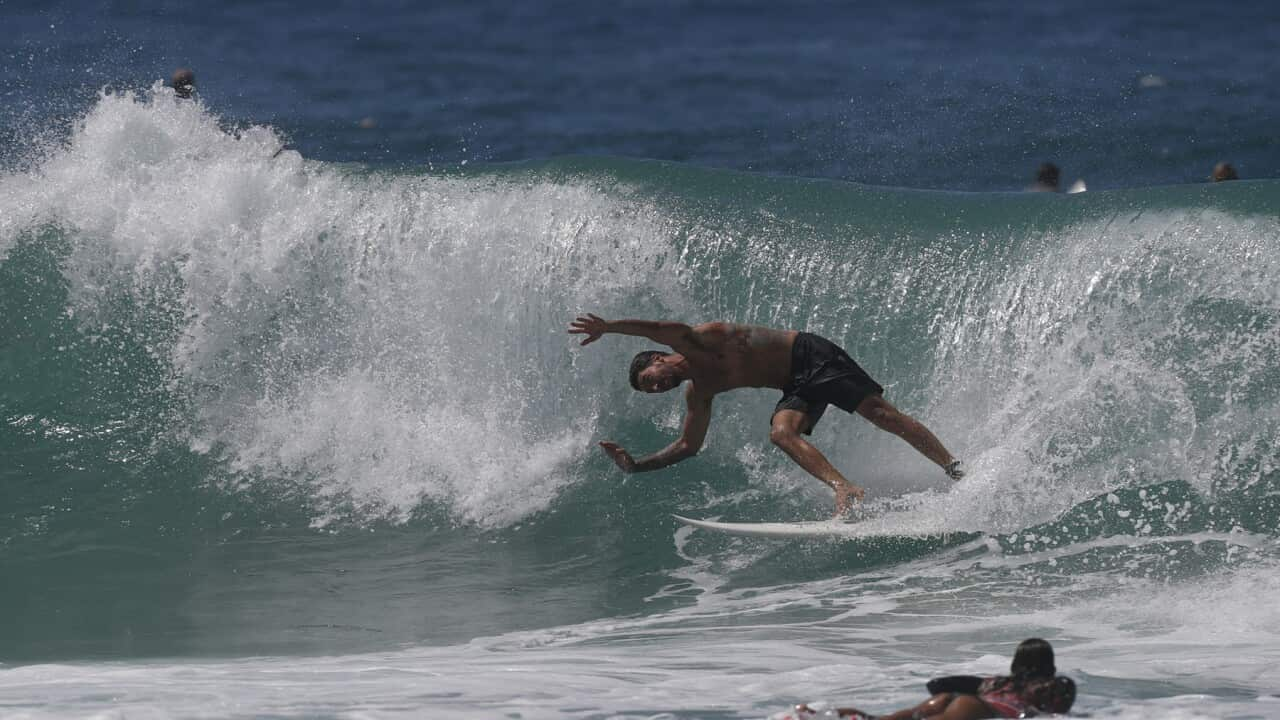ENGLISH
It's July 1982 in Adria, a town in northern Italy.
Rally driver Arnaldo Cavallari is sick of the French baguette.
He thinks it's everywhere.
It's taking over, and he wants to create an alternative.
"The idea started from making a better bread then a French baguette. Ciabatta bread for sure is known in more than 50 countries in the world."
That's Arnaldo's best friend, Marco Vianello.
But Arnaldo also had an ulterior motive.
His parents made flour, and he thought a new bread could be good for business.
"At that time, it wasn't so easy, economically, here. So making a good bread was a good idea of Arnaldo to sell the flour."
Arnaldo, a four-time Italian Rally champion was a big character in Marco's town Adria.
But he wasn't just known for his racing.
He was also president of the football club.
He did charity work, and he was often seen helping out at his parents flour mill, and crucially, he was fiercely competitive.
So when Arnaldo decided to create a new bread, no one doubted him.
He knew he had access to good quality flour.
He just needed some expertise to help. And in 1982, he recruited bakers, Francesco Favarone and Arnaldo Cremonesi, to help.
They spent weeks at Arnaldo's family's mill, testing new dough mixes and proving times, refining and adapting existing recipes, and using his own flour mix, which he called farina natura uno, which translates as 'natural flour one'.
"Together they had a thought to try to make a bread with more water than the French baguette and of course in the next month, they have made some more perfect with the quantity of flour, the mix with water and yeast and other things."
So why was it called ciabatta?
“The bread was not so high and it was like house-shoe (slipper) that we here we call ciabatta; one of those men said it was like a ciabatta and Arnaldo said okay, so we can call it ciabatta bread."
For those unfamiliar with ciabatta, the white loaves are slipper shaped, as Marco explained - flowery and crusty on the outside and soft, airy and chewy on the inside.
Arnaldo copyrighted the name Ciabatta Polisano, after the area where he worked.
Italians loved it, and they weren't the only ones.
It helped that Arnaldo was a natural salesman.
Marco met him in 1983 back when he was a DJ on Radio Adria.
He came on Marco's show to promote a new race he'd come up with called the "Rally del Pane" - or bread rally.
"That competition was a great part of the history of our town. I remember that I made some interviews with him. But of course, at the time, he was a very, very busy man. He was always travelling all around the world, all around the Italy."
By this point, Arnaldo was in his 50s and he retired from racing, but he certainly wasn't ready to take it easy.
He travelled the world spreading the word about his ciabatta and it soon paid off, appearing on British shelves in 1985, and in the US in the late 80s.
By 1999, Arnaldo's company, Mulini Adriasi, which means the mills of Adria, had licenced bakers in 11 countries that produces bread.
Italian
Siamo a luglio del 1982 ad Adria, una cittadina del nord Italia.
Il pilota di rally Arnaldo Cavallari è stufo della baguette francese.
Pensa che sia ormai ovunque.
La baguette sta dominando, e Arnaldo vuole creare un’alternativa.
"The idea started from making a better bread then a French baguette. Ciabatta bread for sure is known in more than 50 countries in the world."
Questo era Marco Vianello, il migliore amico di Arnaldo.
Ma Arnaldo aveva anche un altro motivo.
I suoi genitori producevano farina,e lui pensava che un nuovo tipo di pane avrebbe fatto bene agli affari.
"At that time, it wasn't so easy, economically, here. So making a good bread was a good idea of Arnaldo to sell the flour."
Arnaldo, quattro volte campione di rally, era un personaggio noto ad Adria, la città di Marco.
Ma Arnaldo non era conosciuto soltanto per le sue corse.
Era anche presidente di una società di calcio.
Aveva fatto volontariato, ed era spesso visto al mulino dei genitori, e soprattutto era ferocemente competitivo.
Quindi, quando Arnaldo decise di inventare un nuovo tipo di pane, nessuno ne dubitava.
Sapeva che avrebbe avuto accesso a della farina di qualità.
Aveva soltanto bisogno di aiuto da parte di esperti. E nel 1982 assunse due panettieri, Francesco Favarone e Arnaldo Cremonesi, per aiutarlo.
Passarono settimane al mulino della famiglia di Arnaldo, provando nuovi impasti e tempi di lievitazione, raffinando e adattando ricette già esistenti, e usando la propria miscela di farine, che chiamò farina natura uno.
"Together they had a thought to try to make a bread with more water than the French baguette and of course in the next month, they have made some more perfect with the quantity of flour, the mix with water and yeast and other things."
Allora, perchè si chiamava ciabatta?
“The bread was not so high and it was like house-shoe (slipper) that we here we call ciabatta; one of those men said it was like a ciabatta and Arnaldo said okay, so we can call it ciabatta bread."
Per coloro che non sono familiari con la ciabatta, le pagnotte bianche sono assottigliate, come spiega Marco – croccanti e farinose all’estreno e soffici, areate e gommose all’interno.
Arnaldo brevettò il nome name Ciabatta Polisano, dal nome della zona in cui lavorava.
Gli italiani se ne innamorarono, e non furono i soli.
Il fatto che Arnaldo fosse un venditore nato aiutò.
Marco lo incontrò nel 1983 quando faceva il DJ su Radio Adria.
Arnaldo andò al programma di Marco per promuovere una nuova corsa, che chiamò "Rally del Pane".
"That competition was a great part of the history of our town. I remember that I made some interviews with him. But of course, at the time, he was a very, very busy man. He was always travelling all around the world, all around the Italy."
A quel punto, Arnaldo, sulla cinquantina, si era ritirato dalle corse, ma non era pronto per prendersela con calma.
Viaggiò in giro per il mondo parlando della sua ciabatta e presto questa cosà fruttò, comparendo sugli scaffali inglesi nel 1985 e su quelli statunitensi a fine anni 80.
Nel 1999, la società di Arnaldo, Mulini Adriasi, che significa i mulini di Adria, aveva panettieri in 11 Stati a produrre pane.
Report by Rachel Naylor for SBS News.




